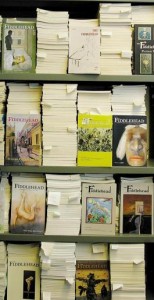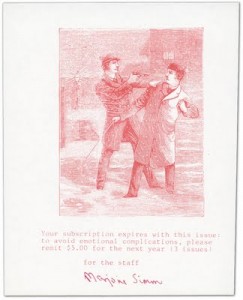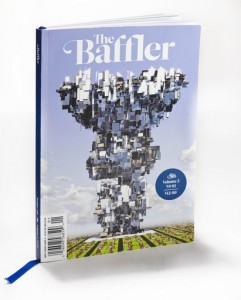 I was really interested in talking to Susan Gibb about HyperText. As a retired 90’s mush/mu/mud (text-based messageboard) completely small-time h4x0r (hacker), I was looking forward to the walk down memory lane. In the 1990’s, text-based black screen green font message boards were all the rage. A person could sign up (with an invite) to a forum, and write a story. The story would be action and narrative based, character driven, and a matter of survival. If you were signing off the for evening, you would write “go to sleep” and then your character would go to sleep. If it was in a bed, you would write “go to sleep in bed” if the sheets were white, you would write, “go to sleep in white bed” and so-forth. As a 12 year old fiction writer, this seemed like a good way to get practice with description and place, movement and blocking.
I was really interested in talking to Susan Gibb about HyperText. As a retired 90’s mush/mu/mud (text-based messageboard) completely small-time h4x0r (hacker), I was looking forward to the walk down memory lane. In the 1990’s, text-based black screen green font message boards were all the rage. A person could sign up (with an invite) to a forum, and write a story. The story would be action and narrative based, character driven, and a matter of survival. If you were signing off the for evening, you would write “go to sleep” and then your character would go to sleep. If it was in a bed, you would write “go to sleep in bed” if the sheets were white, you would write, “go to sleep in white bed” and so-forth. As a 12 year old fiction writer, this seemed like a good way to get practice with description and place, movement and blocking.
Then there were the embedded hidden messages. Within the board, often, there would be an invite to an event. Often times (and this is going to sound so, so cliched) there would be a hint toward a map-point. The map-point was the place you would go to IRL (in real life) to acquire your map (via giving 3 or so dollars and saying the code word embedded on the messageboard) toward where to go next. Where to go next was a rave, and if you showed the map at the door, you were in. Thus began my pre-punk early teen years of dating much, much older DJs and computer “1337” (Elite/LEET speakers).
When I think about HyperText from a New Media standpoint, I can’t help but nod toward the Infrarealists, the Flux Movement, old h4x0rz, new ways of communicating writing, and David Foster Wallace. In a story, if a word which can be clicked on is linked to another porthole of information, our conscious is re-directed to that footnote. The question then becomes is HyperText a means of distraction, or a means of elaborating on information? If as is the case in the interview with Susan below, amazon.com is linked not only as the word to be read but as an actual URL computer link, and we click on the link, do we actually end up thinking less? Instead of allowing our minds to envision and remember what amazon.com is, the information is at our fingertips, not only in definition, but in form, we are taken to amazon.com itself, and in doing so, one stop closer to what many 1337 would refer to as “Singularity” which is a movement of collective thought toward one thought, one way, one conclusion. Terrifying to me personally, as I’d rather you not know what I’m thinking. (It will be interesting to watch Fictionaut over the years to see: Will we one day all post a different story about the same fish? The same dream?)
I think about David Foster Wallace because I think that what he did with footnotes was a print early example of HyperText, I think in some ways, HyperText is footnoting, however, I also believe DFW and HT’ers to be onto something much, much, more complicated in the way of leading, directing, or even mis-directing the psyche. I believe HyperText to be “trippy, man” and so, I asked Susan about the Flux art movement as one example of a collective of artists asking themselves and their audience to think on a more Meta-planar-level. I think in HyperText, we see one more bridge in the gap in communication. Much like the telephone text message, for example. I have a friend who’s getting his PhD in this at USC right now, and he is going to read this and call me a n00b.
Q (Nicolle Elizabeth) What is HyperText both as a movement and a Fictionaut group?
A (Susan Gibb): Hypertext is very simply the interactive abilities granted a reader to travel a path through a narrative (and I’m just referring to hypertext here in its literary nature) by his own selection of following links. Is it a movement? Well no, and yet it does expand the borders of narrative by crossing them, allowing a seeming randomness and freedom to a work though the story and links in all its elements are carefully designed by the author/creator. In it’s simplest definition, hypertext is clicking on a highlighted word or phrase to bring you to another page on the web. It’s selecting your way through amazon.com to find that perfect purse, and complete the purchase by filling out forms before the final “Place Order” button is pressed.
The Hypertext Fiction group here at Fictionaut is basically for both writers who have used the medium and those who have expressed interest in the form. Hypertext reading brings a natural sort of resistance because it is presented differently than a linear formatted, straight read and the idea of the reader “writing” his own version of the story (a la Roland Barthes) by his selection of clicking on particular words to lead him forward is worrisome to those not as ambitious to work at reading. Or those who fear getting lost or lacking the confidence in making choices. I call it the “getting in the wrong line at the supermarket syndrome.”
Do any of the people involved with HyperText (the group) have previous programming, mixed media or new media experience?
Yes, Dorothee Lang, Steve Ersinghaus, Chris Klimas, Craig Snyder, Scott Garson, have all produced hypertext works and Finnegan Flawnt has been convinced to use the medium in future work. Mark Bernstein, chief engineer at Eastgate has designed the software which I use to produce hypertext story. Hypertext, by the way, would be considered only one form of new media; there are many others that overlap in audio, visual, and text that the term encompasses. My piece, Blueberries, recently published in the The New River Review employs visuals in the background images of many “pages,” and the movement of the narrative is emphasized by the colors of text, background, fading of image, etc. that become a part of the setting of tone. The logo of the group is in fact a “map” of the writing spaces or pages that make up the story, Blueberries, and show the various paths by which one can read the story.
You guys ever hear of Jenny Holzer’s “Protect Protect” exhibit?
I hadn’t, but in checking the web, I find her work immensely interesting. It would definitely come under the heading of New Media, including text, though it is not hypertextual. There is an interactive element to hypertext that is not inherently a part of new media art–whether it be visual or textual. Holzer’s exhibit also appears to be making a statement that is not necessarily a part of all textual new media. There are artists who use hypertext elements within installation works such as Dene Griger, who uses her body as the interactive element working within the piece. I’m currently planning a hypertext piece that introduces sound and more visual enhancements to the story. What influences me is the wide open opportunity when an artist can expand upon ideas by involving all senses of his audience. Installation art usually does involve some manner of interaction, as the viewer is often a part of the piece. This same concept is what moves hypertext story.
Do you feel the HyperText movement is a nod toward the Flux movement? If so, how?
Not really. I think that the only thing hypertext has in common with the Fluxus philosophy is that it can include other sensory enhancements and stimulations such as music, voice, and visuals whether stationary or static into its process. It is certainly not anti-art, as the Fluxus attitude may espouse, nor an example of simplicity, as hypertext and other new media methods can be quite complex in their arrangement. And, just as book-based literature, hypertext is not given towards a particular genre or humor. All new media will expand the art form however, and is wide open to experimentation, as was also the intent of the spirit of Fluxus artists.
How does Hypertext help communicate a story or detract from a story?
I think Scott Garson put it well in his artist notes on a piece recently published in Matchbook: “what’s exciting is that hypertext attempts to use technology as the basis for its existence, rather than an impediment or something to accept which devalues it because it isn’t printed.”
Now that we’re reading online via computers, e-readers, and phones, the medium of text literature is simply adjust itself to the methods. However, hypertext story takes advantage of the capabilities of online reading to move in many directions other than scroll or flip. For a writer, the ability to add momentum to a story via side trails than may go into more depth of background or character, to introduce to the curious or adventurous reader an alternate path that may lead him into a new world that may not be vital to story but surely offers a deeper look is an awesome implement. It is also an awesome responsibility. There is a certain amount of learning to write in the form so that readers aren’t left hanging off cliffs or walking (reading) in endless circles–unless that is his intent. Hypertext narrative can also offer many different endings to a story; parallels in time that change the outcome by choice–just as in real life. In truth, hypertext more closely resembles reality than linear text. I find it challenging and fun to write in hypertext form, but not all stories want the paths, and some stories just beg for it.
Add anything else you’d like here.
Even as I encourage others to try the hypertext form, I realize it’s out of comfort zone for many writers as well as readers. Last summer I took part in a group movement that included photography, painting, short stories, character sketches, poetry, and coding. For my part, I wrote a short hypertext story, and we did this every day for 100 days through the summer. It was a great project where the pieces were related and yet each took off in their own direction, the artists building from concepts of each other’s work. It was like a giant hypertext in action in itself, and my pieces grew in complexity and form as I learned with each new piece. Maude Nichols, put up here at Fictionaut and at the Hypertext Group is one of those pieces and it in particular is user friendly–employing a multiple choice for its linking structure. I knew that this particular work would overcome the quandary new readers find themselves in when given the choice of several links to follow by explaining exactly where the choice will lead. It’s a fun piece and I was glad to see such a warm reception to it here. Maybe I’ll put up another, slightly tougher one soon!
My websites: http://susangibb.net and http://susangibb.net/blog2
Nicolle Elizabeth checks in with Fictionaut Groups every Friday.


 On a maudlin note,
On a maudlin note, 


